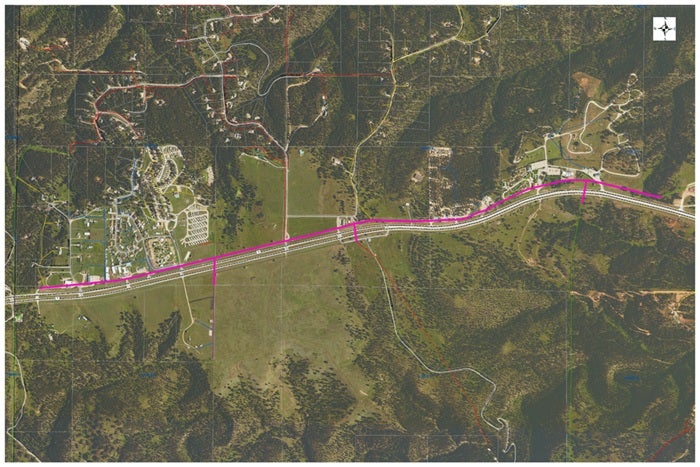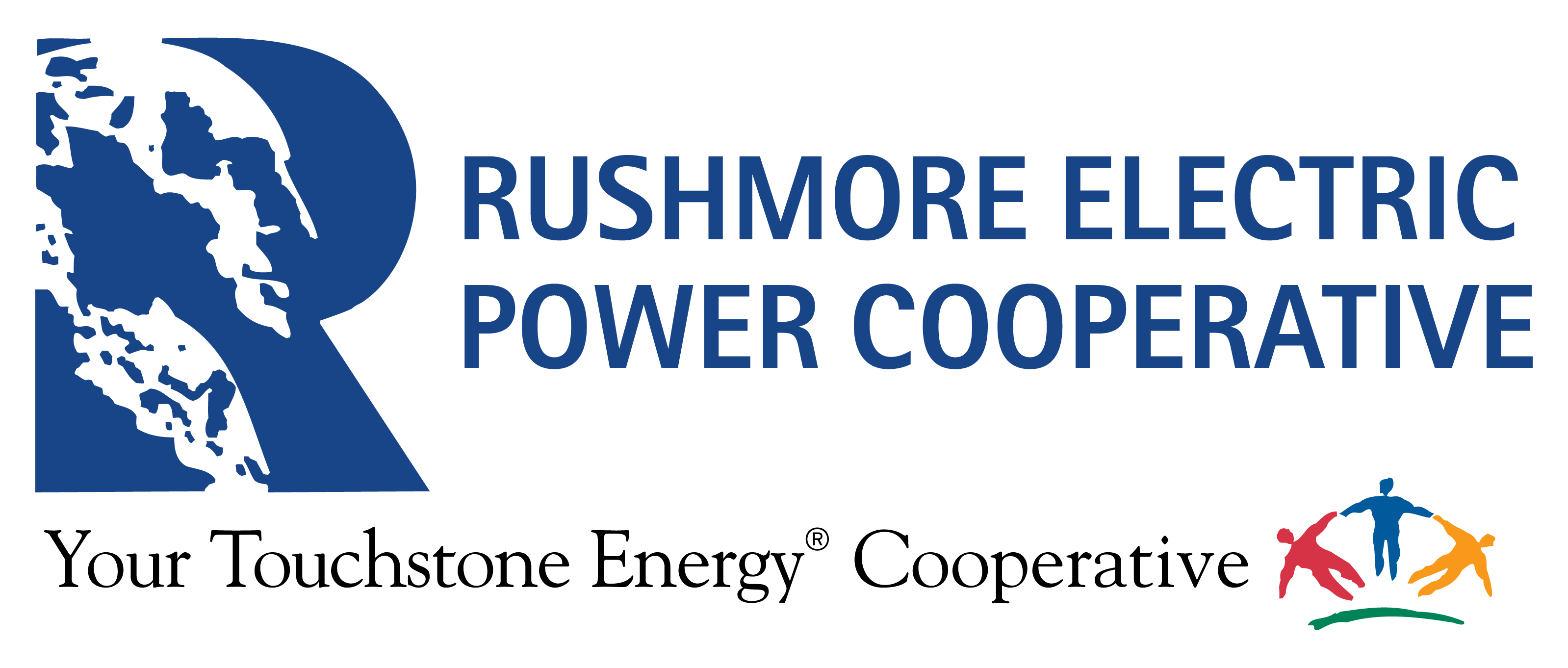Our WARN Project
Black Hills Electric Cooperative joined a consortium of 37 electric co-ops and other rural utilities selected to receive federal funding through the Wildfire Assessment and Resilience for Networks project, or “WARN.”
BHEC has proposed to replace overhead powerlines with underground lines in Pennington County, southwest of Rapid City. This project will eliminate wildfire risks inherent for overhead power line conductor and overhead recloser operations. The estimated project cost including ditching, labor and materials is $2,967,143.
Project Area Map

More Information
Black Hills Electric Cooperative, Inc. (BHEC) provides safe, reliable and affordable energy and services that improve the quality of life for our members and their communities. Founded in 1940, BHEC serves more than 9,000 members in Western South Dakota, in the counties of Custer, Fall River, Lawrence, Meade, Pennington and Oglala Lakota. BHEC’s peak demand is 52 MW, with 2,738 miles of energized power lines, and 27 full-time employees.
BHEC is a member of a consortium of 37 electric co-ops and other rural utilities selected to receive federal funding through the Wildfire Assessment and Resilience for Networks project, or “WARN.”
BHEC has proposed to replace overhead powerlines with underground lines in Pennington County, southwest of Rapid City. This project will eliminate wildfire risks inherent for overhead power line conductor and overhead recloser operations. The estimated project cost including ditching, labor and materials is $2,967,143.
The project area is located near Sitting Bull Road, along US Highway 16, near the unincorporated community of Rockerville. The project would underground 2.4 miles of line to reduce the risk of wildfire. Approximately 46 power poles would be removed (2.4 miles, approximately 275 feet between poles). All overhead fuses in these areas would also be removed.
The conversion will enhance system reliability, safety, and aesthetics. The scope of work includes trench excavation, conduit installation, cable pulling, splicing, and termination at designated transformer and service points. Existing poles, the overhead conductor, and associated overhead equipment will be removed upon completion of the underground installation.
The new underground system will maintain the same voltage class and service area while being designed and constructed in accordance with IEEE, RUS, and NESC standards. Protective equipment such as pad-mounted transformers, switchgear, and junction cabinets will be installed to improve reliability, sectionalizing capability, and operational flexibility.
Construction activities will be performed in compliance with utility specifications, applicable environmental regulations, and best management practices to minimize soil disturbance, erosion, and other environmental impacts.
Undergrounding will reduce visual impacts, minimize vegetation clearance needs, and lower environmental disturbance in sensitive habitats. The underground configuration will improve system resilience against wind, ice, and storm-related outages while reducing long-term vegetation management requirements. By eliminating the overhead conductor and removing reclosers and fuses from overhead power lines, the project will significantly reduce the potential for utility-caused wildfire ignition and enhance public safety.
The project will be coordinated with local jurisdictions, agencies, and property owners to minimize disruptions during construction. Upon completion, the underground facilities will undergo inspection, testing, and commissioning to verify compliance with all applicable standards and ensure long-term operational performance.
Per the 2020 United States Census, the households impacted by the Project have an estimated population of 713. The area includes residential homes as well as biking and hiking trails used by those living in the surrounding area.
Cloudfire Inc. performed an independent wildfire risk analysis for the entire service area of Black Hills Electric Cooperative. This risk analysis first identifies the risk of igniting a fire along the utility’s lines. This is determined by considering historic weather conditions, vegetation and wildfire fuels, geological features, and various other factors. For each possible ignition, several thousand potential fires are simulated. These simulations are used to compute the cost of damage to structures from the resulting wildfires, and potential damage to utility infrastructure that might exacerbate conditions. The final wildfire risk determination models a combination of the probability of igniting a wildfire, and the extent of damage that could potentially be caused by the wildfire. The risk areas are provided as a color mapping over the utility’s service area. This can be used to determine the critical areas for wildfire hardening that will serve the best returns on investment.
This document highlights the WARN subproject of BHEC in relation to the wildfire risk map described above, and how the Grid Upgrade Plan addresses these risks.
After Cloudfire Inc. provided the risk map data, we identified the highest areas of importance within our service territory:
The central and northern areas of our service territory
This includes much of Custer County and a significant portion of the Black Hills
This proposed Grid Upgrade Plan includes the following area identified by Cloudfire’s model:
- Near Sitting Bull Road, along US Highway 16, near the unincorporated community of Rockerville (~87 percent utility wildfire risk)
In addition to Cloudfire’s assessment, our project addresses the following important considerations that formed the basis for our proposal:
BHEC provides retail electric service to rural homes and businesses in Custer, Fall River, Lawrence, Meade, Pennington, and Oglala Lakota Counties. Our service area encompasses areas of Black Hills National Forest – in close proximity to the popular tourist destinations of Mount Rushmore and Crazy Horse Memorial. Currently, FEMA grades these counties’ wildfire risk between the 58th and 85th percentile. Of note: In the spring and summer of 2025, we received significant rainfall, lowering our FEMA Wildfire Risk Index percentiles compared to past years. Although the precipitation provides a welcome reprieve from recent drought conditions, we expect our wildfire risk to increase sooner rather than later.
Our WARN project involves undergrounding the power line near Sitting Bull Road, which contains grid components that are 60 years old. Undergrounding at this site will reduce significant wildfire risk and electric reliability concerns.
Based on these considerations, we have proposed this Grid Upgrade Plan to best serve our members and secure the most value for our investment.
From the above analysis, it is clear that this project areas present a significant concern for wildfires. Our Grid Upgrade Plan addresses these risks by:
- Undergrounding the power line and removing the existing overhead power line
Undergrounding powerlines makes the electric system safer, stronger and more affordable in the long run. This project will prevent wildfires caused by powerlines or equipment. It also significantly hardens the system to protect it from wildfire caused by natural or human factors in this area.
The project will take approximately 2 years, with construction broken up into four stages to be completed in the months of April through November in consecutive years.
Design:3-6 months
Permitting: Overhead easements will be replaced with underground easements.
Construction: April – November 2026-2027. Undergrounding a distribution line along the road will require some level of traffic control, and the operation of large excavation equipment along with maneuvering large reels of primary cable. Some disruption to traffic flow is inevitable.
Operation: Moving overhead electrical systems to underground includes converting overhead services to underground services requiring utility line workers and operations personnel.
At 2 PM, on 01/06/25, at the Rockerville Volunteer Fire Department Station 1 (13720 S Highway 16 in Rapid City, SD), BHEC hosted a kickoff meeting to introduce the project to interested community members. BHEC noticed the meeting on its website, on social media, and on an office flyer in its Custer headquarters. BHEC reviewed the project’s objectives with attendees, project funding (partially federally funded), the construction location (large project construction site map) and timeline, and anticipated benefits. One attendee stated that it sounded like a “good, smooth, and beneficial project” and was pleased with the post-construction reduced odds of lightning strikes on the impacted section of power line. There was no negative feedback or requested project changes.
Additional questions should be directed to:
Jesse Sorenson
System Coordinator
605-673-4461
jsorenson@bhec.coop
